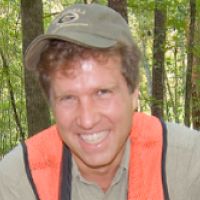Ryland et al., 2016
Mapping depth to argillic horizon using electromagnetic induction on historically farmed soils within the Piedmont region of the United States
Ryland, R., D. Markewitz, and A. Thompson (2016)
American Geophysical Union 2016 Fall Meeting, San Francisco, CA
-
Calhoun, GRAD STUDENT
-
Calhoun, INVESTIGATOR
-
Calhoun, Luquillo, INVESTIGATOR, COLLABORATOR
Abstract
Historic agricultural practices throughout the Piedmont region of the southeastern United States from ~1820 to 1940 led to accelerated erosion. Practices, such as tilling, degraded soil quality altering hydrologic processes on the landscape by limiting infiltration and leading to overland flow and erosion. Erosion due to these practices has substantially redistributed sediment from upper to lower landscape positions, causing a change in the depth-to-argillic horizon along hillslopes. By mapping the depth to argillic horizon within watersheds that have a history of farming and watersheds with little evidence of agricultural disturbance, a better understanding of the effects of farming practices on erosion and sediment redistribution can be made. This study uses extensive soil sampling within historically farmed and unfarmed watersheds to map spatial variations in the depth to argillic horizon. In addition to sampling, Electro-magnetic Induction (EMI) is being tested and calibrated to clay content and other topographic characteristic (i.e. landscape position, aspect, percent slope) from which the depth to argillic horizon can be predicted. Current hillslope and watershed hydrologic models use characteristics from soil classification maps for parameterization, however, these soil maps may lack sufficient spatial detail and may not accurately represent landscapes that have been eroded from historical farming. The results from this study will improve understanding of previous erosion on sediment redistribution and will characterize the potential use of electromagnetic induction as an accurate and efficient means to predict the depth to the argillic horizon. This information will improve parameterization of hillslope and watershed hydrologic models.
Citation
Ryland, R., D. Markewitz, and A. Thompson (2016): Mapping depth to argillic horizon using electromagnetic induction on historically farmed soils within the Piedmont region of the United States. American Geophysical Union 2016 Fall Meeting, San Francisco, CA.
 This Paper/Book acknowledges NSF CZO grant support.
This Paper/Book acknowledges NSF CZO grant support.
Explore Further



